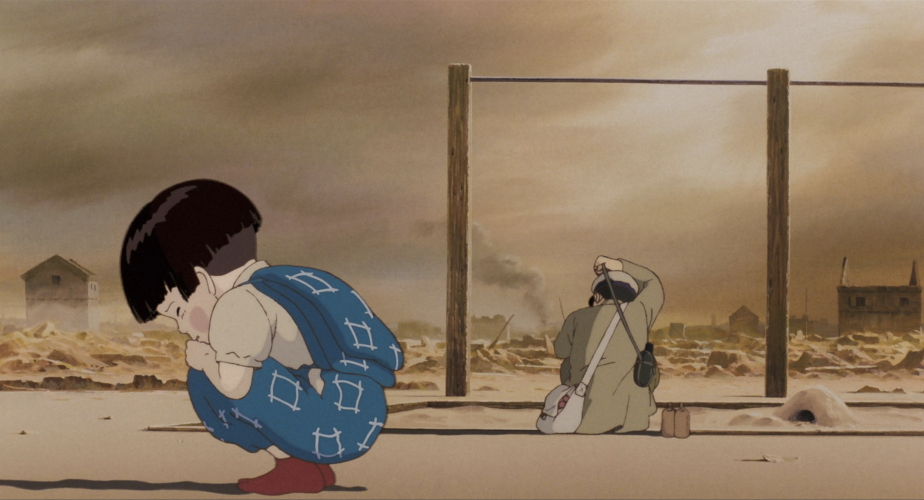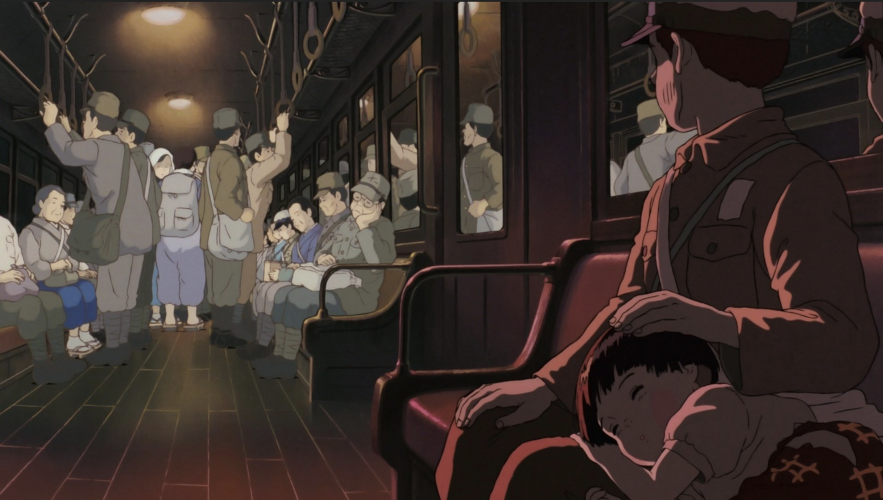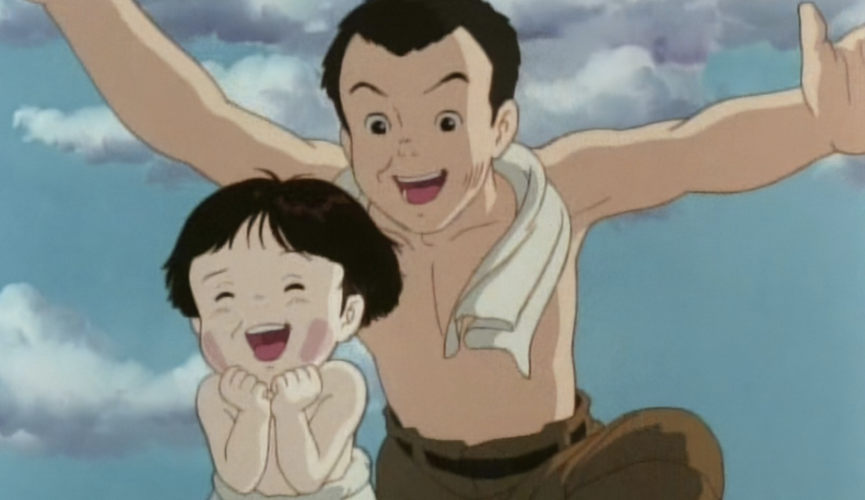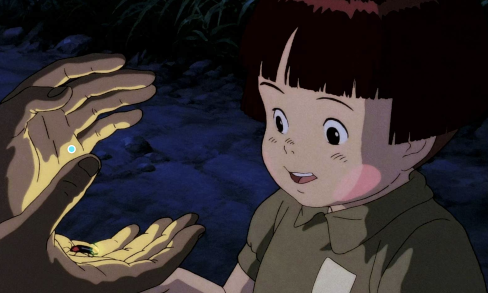Grave of the Fireflies
A Film Review
“GraveOfTheFireflies”, 1988, Isao Takahata
Toward the end of World War II, when novelist Akiyuki Nosaka
was a teenager, and before the atomic bomb was ready for use,
America sent upwards of 500 bombers to Japan with the intent of
burning down the city of Kobe where he lived. They succeeded
and in the aftermath two of his sisters died of starvation.
Later he wrote the novel on which the movie “Grave of the
Fireflies” was based. The story tells of two children, Seita
and his sister Setsuko, who escape a burning city and then
slowly starve to death.
The film, which was created by animator Isao Takahata,
starts with Seita's death in a train station.
In the short introductory scene most passers-by scorn
or ignore the dying Seita. One however surreptitiously drops
him some, now useless, food. After he dies Seita reunites with
Setsuko in the spirit world. She is delighted to see him.
Their parents are nowhere to be seen, the bond between brother
and sister is
the only one that counts. Seita takes Setsuko to review the
sequence of events that led to their dying.
This is a story that begs to be animated. First because filming the total devastation of Kobe would have been almost
impossible. Second because the part of Setsuko requires a
four year old and no four year old could play that part.
But there is a third less obvious reason to animate this
story.
On the right we see an actor playing Seita in a live action
retelling of the story. On the left we see exaggerated
emotion of the kind that would turn us off if an actor
attempted it. But with an animation we are apt to absorb the
emotion itself without stopping to think about how realistic
it is.
The effect of the animation is so powerful that even knowing
the story in advance will not inoculate you from its.
After escaping Kobe's destruction Seita and Setsuko leave town
to stay with an aunt and uncle.
As they travel we see their isolation from other human
contact. Setsuko is sleeping with her head on Seita's lap. He
sees taking care of her as his responsibility and no one
else's. For her part Setsuko expects that Seita will never
stray from her presence. He is fine with this and has no
intention of leaving her for more than short errands.
Takahata has expressed the opinion that they are almost like
lovers.
Once they are established with their aunt and uncle, the
aunt expects Seita to find work. She decides her husband and
daughter deserve a larger share of their meager food supply
because they are working to support the war effort. Although
Seita has brought a little wealth with him, she sees him as a
freeloader. It doesn't help that Seita and Setsuko are living
in their own bubble
where they manage to enjoy themselves. Tensions mount until
Seita decides to move to a cave-like structure. He was aware
of its existence because he and Setsuko had once used it to
shelter from a bombing raid.
At their new home Seita and Setsuko capture fireflies.
When they die she honors them with a burial. This is where we
see the significance of the film's title. The Japanese honor
their ancestors. Traditional houses have altars for
ancestors. Once a year during the time of Obon many Japanese
take part in graveside ceremonials. Setsuko is associating
the burial of fireflies with the burial of her mother but the
only thing she has in common with fireflies is a very short
life.
When I first saw this film I did not question Seita's
decision to leave his aunt and uncle. Seita's aunt was
mistreating both of them. Having been raised on fairy tales
about evil stepmothers I saw the situation as
untenable. Of course his decision to leave was reckless but
that's not uncommon in the world of film. Besides like most
Americans I appreciate individual initiative when I see it.
In a collectivist culture like Japan's, individual initiative
is not appreciated so much. By placing his own opinions over
those of his remaining family members Seita is being
unJapanese. The film supports this point of view. Seita is
told by a friendly farmer, that he should go back to his
family—regardless of how badly they will treat him.
Takahata intended “Grave of the
Fireflies” to be about Seita's relationships to the world and to
his sister. In an interview he said that Seita “decides to
become the guardian of his little sister, even if it means
making an enemy out of the entire world.”
Takahata did not see “Grave of the Fireflies” as an
anti-war movie. However to many of us the film is
an anti-war masterpiece
that shows the consequences of going it alone.
As a Japanese proverb would have it: “The nail that
sticks out gets hammered down.”






